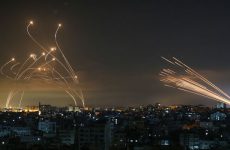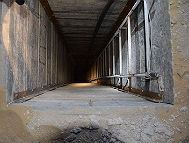
Israeli officials say that so far Hamas has not yet tunneled under the Gaza border into Israel. However, it may be only a matter of time – sooner or later they will. If Hamas managed to surprise the IDF during the last war in July-August, 2014, it is only natural that they will try to do it again. In an attempt to placate the public, Defense Minister Moshe Yaalon has declared that all measures are being taken to protect the Israeli families living along the frontier. Nonetheless, these civilians keep hearing underground noises and are very worried. Why wouldn’t they be? If the tunnelers are digging away, one night the terrorists could suddenly surface above ground and try to kill them or take hostages back to Gaza. So while Prime Minister Netanyahu and his aides are trying to reassure the public, tension is mounting.
It appears Hamas has thrown caution to the wind. For the second time in a week, one of their tunnels has caved-in killing two more of the diggers. Last time, seven Hamas members were buried alive when another tunnel collapsed. Bear this in mind: heavy rain storms have lashed the Gaza area lately. Large amounts of water have been seeping into the ground threatening to collapse the tunnels on the excavators. Surely the prudent thing to do would be to halt the tunneling temporarily. But not Hamas. At the funeral for his dead diggers, Hamas leader Ismail Haniyeh bragged that the tunneling project was his flagship. In his words, his tunneling project is advancing around the clock – it was Gaza’s ‘strategic’ weapon against the Jews!
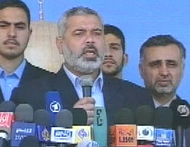
Back in the summer of 2014, Hamas fighters did surprise Israel several times by popping out of the tunnels and killing several soldiers and taking two IDF hostages. They are believed dead, but Hamas refuses to give any information, hoping to exchange the bodies for many live Hamas members. Haniyeh is revivifying what was viewed as Hamas’s only feat in a war he started by rocketing Israel, but which devastated much of Gaza. In fact, the huge investment in the tunnel project has taken the lion’s share of the vast international financial aid that was earmarked for rebuilding Gaza. Of the 11,000 buildings severely damaged by Israeli air strikes (after Hamas used them for launch pad sand arsenals) less than 10% have been repaired or rebuilt.
The IDF is conducting top-secret research into counter-measures. In the meantime the independent State-Comptroller has just leaked a report that blasts the Prime Minister and the IDF for not preparing adequately for the tunnel threat in 2014. At the time, Netanyahu and the defense establishment contended that they were not surprised by the tunnels. But the fact they did not develop an effective answer disproves their case. They just didn’t take it seriously enough.
Will Israel produce a unique defense system to detect and neutralize the tunnels before Hamas goes operational with them?
Moreover, IDF planners had no body of technology to draw on from anywhere else in the world when it comes to detecting tunnels. Tunnels are not a military tactic in the 21st century, so they had to start from scratch. Actually this was also the case with Israel’s Iron Dome short-range missile defense system, which was planned, built, and went operational in the unprecedented time of less than three years. The Israeli public tends to expect almost overnight wonders from the IDF, the Mossad and its Shabak Security Service, and more often than not they do deliver. Now the question is one of time. Will Israel produce a unique defense system to detect and neutralize the tunnels before Hamas goes operational with them?
Netanyahu and his cabinet now face a dilemma. Israeli civilians living along the Gaza border demand that Israel should seek and destroy the piers to the tunnels inside Gaza. But this is easier said than done. Those entrances may be inside heavily populated areas or hidden inside hospitals and schools. During Protective Edge in 2014, Haniyeh and his commanders set up headquarters inside the biggest hospital in Gaza. Additionally, a pre-emptive strike would put Israel in the position of demolishing the current cease-fire and the Jewish state would again be tarred and feathered by all and sundry.
On the other hand, what if Hamas digs right up the border, within a few yards, and then waits for a time of its choosing to quickly tunnel through and come up on the other side? Knowing this, would Israel simply wait for it to happen, or would this force her to evacuate civilians who might be in danger?
IDF Gen. (res.) Amos Yadlin has assessed what to do about the Hamas tunnels from Gaza in his article entitled ‘Preventative Strike or an Alert Waiting’:
‘One factor is common to the various options; the next confrontation (with Hamas) will come sooner or later and is around the corner… among other things an Israeli preventative strike in Gaza at present could spark a further escalation in other regions: the ongoing terror in Judea-Samaria (West Bank) and inside Israel itself. Moreover, an escalation in Gaza could also trigger negative developments in other regions. Nevertheless this should not forestall any required Israeli action, although it must be weighed very carefully.
In light of this complex situation, Israel should set a red line, which if crossed by Hamas, will trigger an Israeli preventative offensive. This strike should be short and powerful, aimed at creating a clear strategic outcome. This was not the case in our Protective Edge operation. But any other course of action will leave us with another futile discussion with Hamas, and maybe even with other actors in different arenas’.
Another eminent strategic expert, IDF Gen. (res.) Yaakov Amidror, also notes that if the Hamas tunnels are thoroughly destroyed by tactics developed since 2014 (for the sake of the argument), Hamas could still rebuild new tunnels. If so, what is the logic of launching an operation now? Amidror also advises Israel’s decision-makers to think long and hard before deciding. Although it can be known how a military operation will begin, how it will end is never known. And when peoples’ lives and Israel’s international position hang in the balance, the final decision should be taken only after a clarification into the maximum benefit of the operation as compared to the potential complications. On the other hand, there is also the cost of delaying it. Amidror concludes:
‘The life of the decision-maker is tough but he should not be driven by short-range considerations, short tempers, or slogans’.
Damascus Gate to Jerusalem’s Old City:
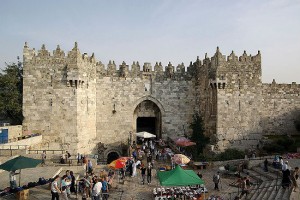
It is one of the flash points of the current intifada. Throngs of Jewish worshippers go through Damascus Gate to make their way to the Western Wall, the site of the First and Second Jewish Temples. A three-member squad of the Israel Border Police is on patrol. They spot three suspicious Palestinian young men loitering in the area. The police officers approach and ask to see their ID cards. Two members of the squad are nineteen-year-old recruits; one is Hadar Cohen from the town of Or Yehuda. The third is a veteran officer. While one of the Palestinians distracts them by taking out his card, the other two swiftly draw sub-machine guns hidden inside their jackets, and open fire. The third stabs and shoots Hadar Cohen. But not before she opens fire killing one of the terrorists. The second policewoman also opens fire before she is stabbed. The third policeman shoots dead the three assailants. Hadar is given emergency treatment on the spot and rushed by ambulance to Hadassah hospital. A short time later she dies in intensive care.
What happened? In a fraction of a second the terrorists got the jump on the Israeli police officers. That’s because they were not trigger happy or intent on conducting an ‘extrajudicial execution’ as some critics claim these days. On the contrary, the truth is that when they approach Palestinian suspects, Israeli security personnel should have a bullet in the chamber and their safety off. That is the only safe way to approach Islamist fanatics be they in Jerusalem, Paris or San Bernardino. Otherwise…
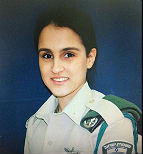
Hadar Cohen and her colleagues saved the lives of many other Israelis on the afternoon of February 3rd – there is no way of knowing how many. The three terrorists also had explosive charges hidden under their coats. So this attack was not a ‘lone wolf’ acting on his own; it has the trappings of a carefully planned plot possibly aided by a terror organization. By the way, there is no shortage of sub-machine guns among Palestinians on the West Bank who also use them for self-protection in local family feuds.
Like many other Israeli young women, Hadar Cohen volunteered to do her compulsory military service in the Israel Border Police. There is no question they serve on dangerous duty and Hadar is a hero. But there is also this painful and lingering question: with only two months training, was Hadar Cohen given enough experience by her commanders before being sent to check out terrorists armed with sub-machine guns and knives?
PS: Take your pick. The CBS website headlined the attack:
‘Three Palestinians killed as daily violence grinds on?’
Ninety minutes later, after a furious Foreign Ministry reaction, the CBS editor amended it:
‘Israel police kill three alleged Palestinian attackers’
Question: Was this just sloppy journalism or malicious?



